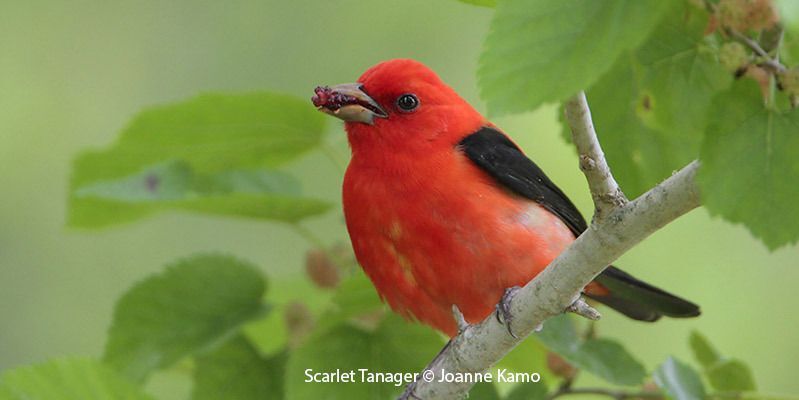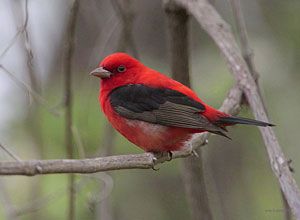
© Joanne Kamo
Scarlet Tanager
Piranga olivacea
Family: (Cardinalidae) Cardinals and Allies
Preferred Habitat: Canopy of mature woodlands
Seasonal Occurrence: Common in spring, occasional in fall
Profile: The breeding Scarlet Tanager male is one of the most brilliantly colored birds that you may encounter during migration. In spring and summer, the males are scarlet red with jet black wings and tail. Females and fall immatures are olive-yellow with darker olive wings and tails. After breeding, adult males molt to female-like plumage, but with black wings and tail.
Of the more than 230 species of tanagers that occur in the western hemisphere, only four regularly migrate to North America to breed, almost as if to tempt us to visit the Neotropics to see their colorful kin. Wintering in Amazonia and nesting in deciduous forests in the eastern half of North America, the Scarlet Tanager migrates farther than any other tanager.
Despite their brilliant coloring, Scarlet Tanagers can be difficult to spot as they are birds of the tree top canopy where they forage for insects such as weevils, wood borers, leaf beetles, cicadas, scale insects, dragonflies, ants, termites caterpillars, wasps and bees. Their call is a hoarse chip or chick-burr, unlike other tanagers. Some say their song sounds like a robin with a sore throat.
Our Beak of the Week for March 13, 2021 is one of 12 birds featured in Confluence, a public art installation currently in progress along the Bayou Greenway trail at the confluence of White Oak and Buffalo Bayous. The 223-foot mural, created by artist Jane Kim, founder of Ink Dwell Studio, showcases the birds that call Houston's bayous home. Confluence is commissioned by Houston Parks Board and hosted in collaboration with Buffalo Bayou Partnership. Houston Audubon is pleased to provide ornithological expertise and collaborate on programming and promotion of the mural. #ConfluenceHOU
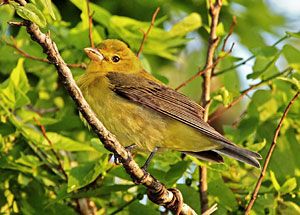
© David McDonald
Profile by Grace Yaros: With their dazzlingly bright plumage, Scarlet Tanagers are distinctive summertime residents of eastern deciduous forests. During the breeding season, adult males have brilliant red bodies and black wings and tails. Females are yellow, with darker olive wings and tails. Immature males and adult males in non-breeding plumage are similar to females, but have black wings and tails. Females and immatures are similar in appearance to female and immature Summer Tanagers; Scarlet Tanagers have shorter bills and darker, more contrasting wings than Summer Tanagers. They can also be distinguished by their calls: Scarlet Tanagers give a “chip-churr” call, while Summer Tanagers give a “pit-i-tuck” call.
Scarlet Tanagers breed in deciduous forests across the eastern United States and southeastern Canada. They are highly territorial during the breeding season, and males fiercely defend their territories. They can be rather elusive as they travel through the canopy searching for insects, but can be located by their song, a series of short phrases similar to the song of an American Robin but distinctly hoarser. They are long-distance migrants and overwinter in forests and forest edges of northwestern South America.
During the breeding season, Scarlet Tanagers favor large tracts of mature forest, making them vulnerable to habitat fragmentation as forest is cleared and forest patches become smaller. During migration, they can be found in Houston Audubon’s High Island Sanctuaries, including Smith Oaks Bird Sanctuary and Boy Scout Woods Bird Sanctuary, as well as Edith L. Moore Nature Sanctuary in west Houston.
-
Cornell Lab of Ornithology
-
Bird Guide
-
Bird Library
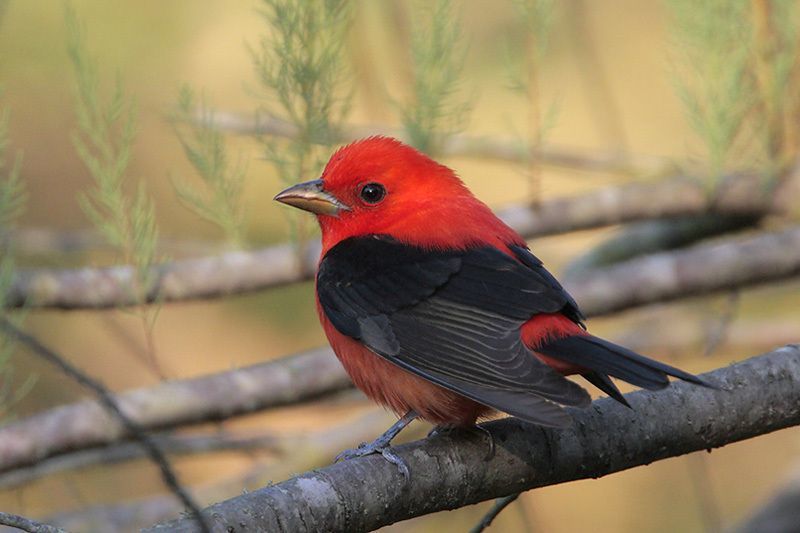
© Greg Lavaty, www.texastargetbirds.com
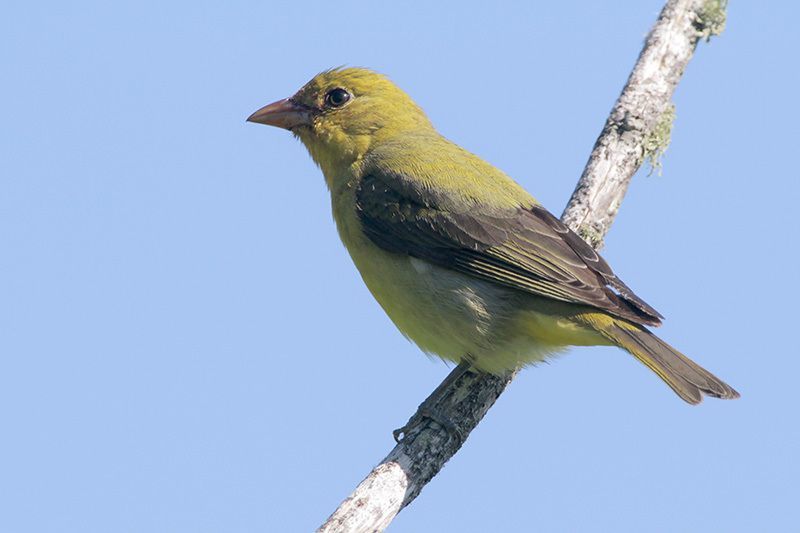
© Greg Lavaty, www.texastargetbirds.com
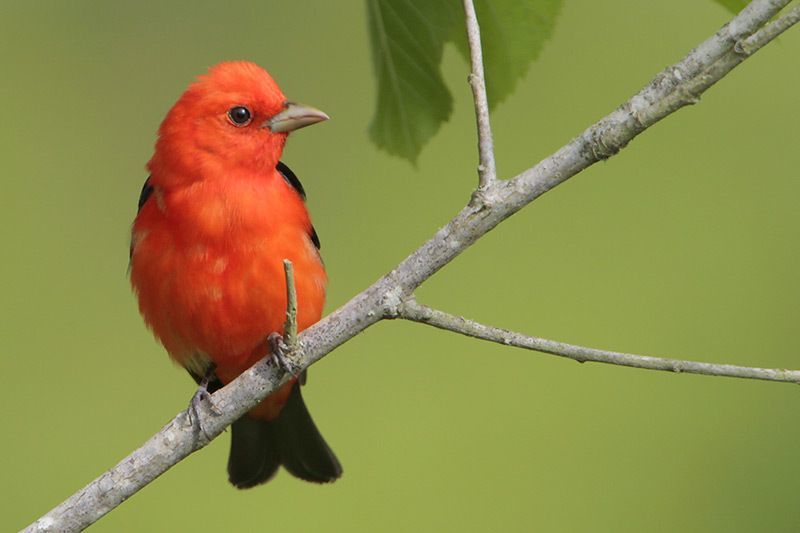
© Greg Lavaty, www.texastargetbirds.com

